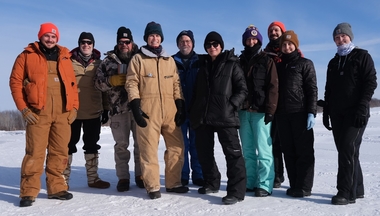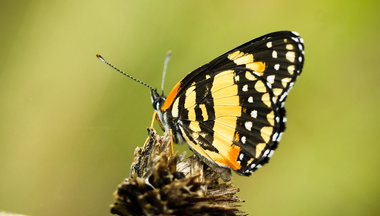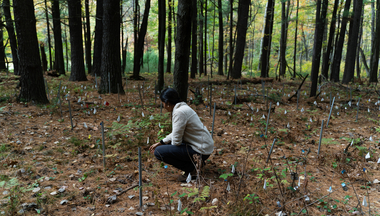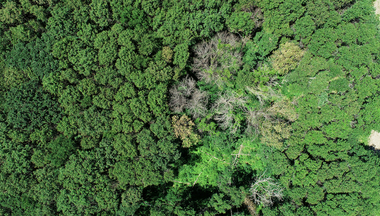EEB

|
Deer in the lyme-lightResearch led by Meggan Craft employs helicopters to investigate the spread of disease in Minnesota’s deer populations. |

|
The insidious pursuit of a salty snackA new study shows that low levels of sodium in plant tissue can cause cannibalistic behavior in a herbivorous butterfly species. |

|
Casting doubt on droughtA new study based on the framework of a long-term experiment at Cedar Creek Ecosystem Science Reserve reveals that the consequences of global change may be worse than we thought. |

|
A new evolutionary frontierMaria Kalambokidis takes on the daunting task of re-framing the study of the origins of life. |

|
Five seedlings to rule them allResearch scientist Karen Castillioni investigates biodiversity at a large scale. |

|
Fashion and factCoral reef ecology and high fashion converge for EEB doctoral student Rachael Kaspar. |
U maintains distinction for ecologyThe University of Minnesota earned high marks for ecology in the Shanghai Ranking for the third consecutive year. |
|

|
Research brief: Understanding mutualism can help control the spread of invasive speciesResearchers use mathematical modeling to better understand mutualism dependence. |

|
Research brief: Mapping deadly oak wilt disease from space to protect our forestsNew research looks at satellite imagery data to protect our forests from oak wilt. |

|
Research brief: Using fire to revive a fragmented prairie landscapeResearchers look at how fires affect pollination in isolated remnants of prairie in United States. |